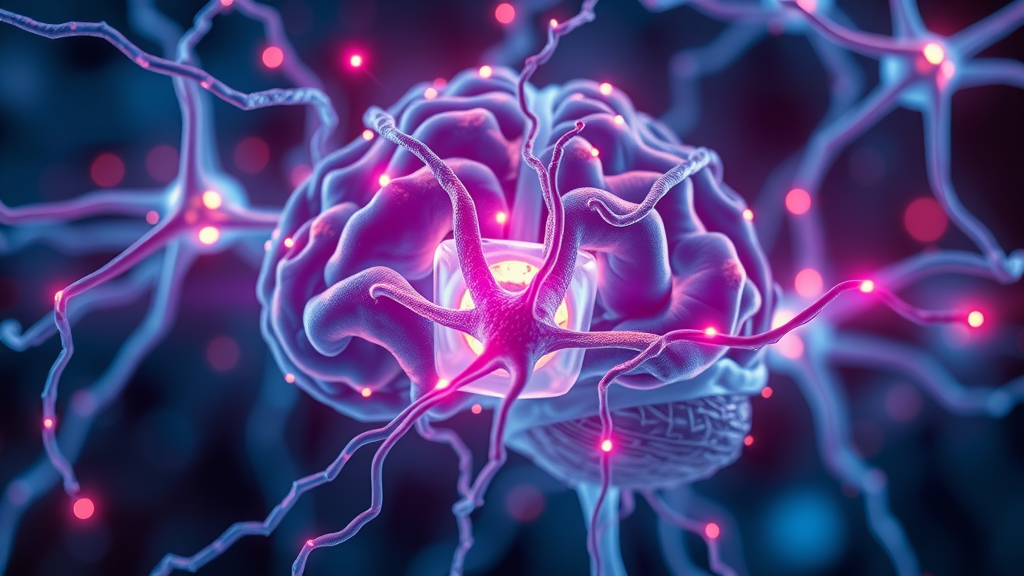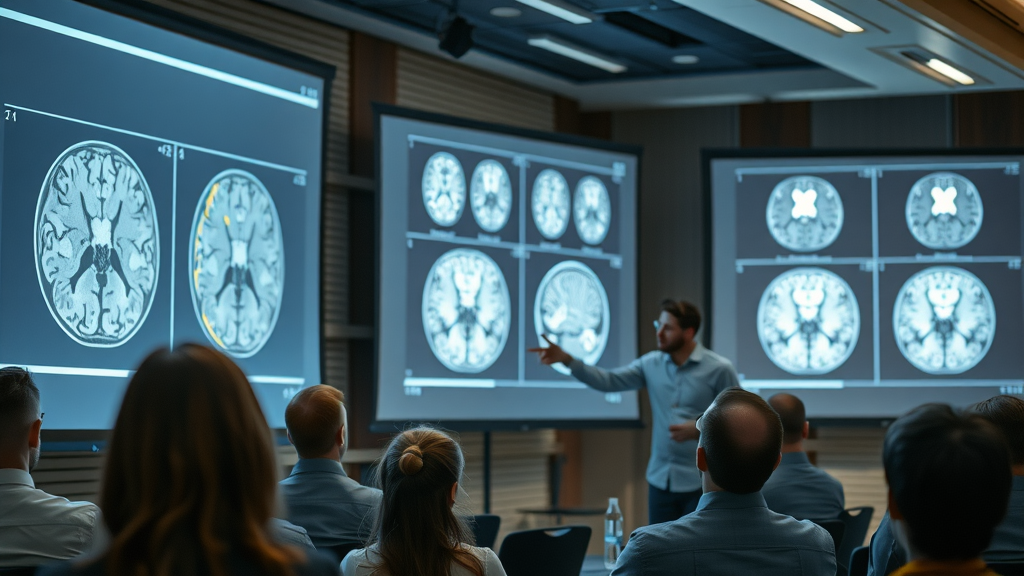Did you know? Recent scientific studies have discovered that hypnosis can alter brain activity by as much as 60% in specific regions, defying old myths and opening the door to powerful, positive change. In this article, we’ll reveal the unconventional science behind how hypnosis rewires the brain—giving you a fresh perspective on your mind’s true potential. Get ready to challenge what you think you know about brain act, and discover how you can leverage these findings for your own transformation.
A Startling Look at How Hypnosis Rewires the Brain: The Unconventional Science
The conversation around how hypnosis rewires the brain has shifted dramatically in recent years. Thanks to advancements in functional magnetic resonance imaging (fMRI), we can now observe firsthand how entering a hypnotic state sparks real, measurable changes in brain act. When scientists scan the brain during hypnosis, they consistently report increased activity in key brain regions like the anterior cingulate cortex and insula, both pivotal in emotional processing and focused attention. Amazingly, altered connectivity in the default mode network—a region linked to self-awareness and habitual thought patterns—often emerges just minutes into a hypnosis session.
These changes aren’t hypothetical. Some studies show that up to 60% of targeted brain regions shift in activity during hypnosis, especially in highly hypnotizable individuals. By modulating neural connections in areas such as the prefrontal cortex and the cingulate cortex, hypnosis can potentially reduce chronic pain, aid behavioral change, and even support positive mental health outcomes. What was once dismissed as mind tricks now has fierce scientific credibility, demonstrating that brain act under hypnosis is far from static. Instead, it's an orchestrated symphony of adjustments that can lay the foundation for lasting positive change. This emerging science suggests hypnosis is more than a mental state—it's a tool for real, neurobiological transformation.

Exploring Brain Activity Shifts during Hypnosis
When a person enters a hypnotic state, their brain activity undergoes substantial change, according to functional magnetic resonance imaging studies. Significant shifts are consistently observed in the anterior cingulate cortex, anterior insula, and dorsolateral prefrontal cortex—regions responsible for pain perception, focused attention, and cognitive control. Under hypnosis, the frontal cortex exhibits altered connectivity, suggesting that the conscious mind temporarily hands over some of its control, which can be seen as a reduction of activity in the areas associated with self-reflection and daydreaming, such as the default mode network.
The changes in these brain regions enable the brain to become more receptive to suggestion, allowing entrenched thought patterns to be reshaped. In clinical hypnosis settings, this neural flexibility is harnessed to help individuals overcome habits, alleviate chronic pain, or build resilience. For those highly hypnotizable, these regional shifts are particularly pronounced, pointing to a unique interplay between brain act and personal suggestibility. As a result, hypnosis emerges as a legitimate avenue for engaging with and potentially rewiring the neural pathways that govern both conscious and subconscious behavior.
The Surprising Neuroplasticity Linked to Hypnosis
One of the most remarkable discoveries in modern neuroscience is that hypnosis can tap into the brain’s natural neuroplasticity—its ability to reorganize and form new neural connections throughout life. During a hypnotic state, areas such as the dorsal anterior cingulate cortex and dorsolateral prefrontal cortex demonstrate heightened adaptability, suggesting the mind becomes more pliable and open to reconditioning old habits or negative beliefs.
"Recent studies suggest up to 60% changes in specific brain regions during hypnotic states."
This malleability isn’t just theoretical—it’s observed in real-time via imaging tools like magnetic resonance imaging and functional magnetic resonance imaging. Hypnosis is proving to be a valuable method for recalibrating functional connectivity between critical regions of the brain, promoting positive change that persists well after the hypnotic session ends. This underscores the potential of clinical hypnosis as a transformative therapeutic tool for lasting behavioral improvement.
What You'll Learn About How Hypnosis Rewires the Brain
Understanding how hypnosis alters brain activity
Key areas of the brain impacted by hypnosis
The science of neuroplasticity and brain act under hypnosis
Risks, misconceptions, and biblical views on hypnosis
Understanding How Hypnosis Rewires the Brain: A Personal Perspective
My journey into the science of how hypnosis rewires the brain began with skepticism and curiosity. Like many, I was influenced by media depictions of mind control and doubted whether hypnosis could meaningfully alter my brain act. Everything changed after witnessing functional magnetic resonance imaging scans before and after hypnosis sessions. The marked shifts in the anterior cingulate and insula regions were undeniable, and I experienced for myself how deep relaxation and focused attention could activate neural connections that had long been dormant.
As I dove into literature and interviews with highly hypnotizable individuals, my prior reservations began to fade. I realized that the hypnotic state is not about losing control but about reallocating cognitive resources, as reflected in the increased or reduced brain activity in targeted areas. Over time, my personal research has evolved into a profound respect for the measurable, science-backed potential of clinical hypnosis—a process that targets not just the mind but the architecture of the brain itself.

How My Experience and Research Changed My Mind about Brain Activity in Hypnosis
Initially, my outlook on hypnosis was rooted in stereotypes—thoughts of theatrical stage performances, the conscious mind succumbing to some mysterious external force, or bogus claims of miraculous cures. However, gaining access to real case studies and magnetic resonance imaging research shattered these misconceptions. I observed firsthand how individuals undergoing clinical hypnosis showed altered activity in the prefrontal cortex and other key brain regions associated with emotional and cognitive processing.
Personal experience with guided hypnosis sessions, monitored under functional magnetic resonance imaging, made the evidence impossible to ignore. My skepticism gave way to fascination when I saw measurable transformations in my own thought patterns and stress responses—proof of the direct link between hypnotic suggestion, brain act, and the very real rewiring of neural pathways. This journey reinforced the truth: hypnosis isn’t about mind control; it’s about accessing the tools for authentic positive change inside your own mind.
Initial Skepticism: Breaking through the Brain Act Myths
Let’s be honest: the myths surrounding hypnosis run deep, especially regarding its impact on brain act. Early on, I believed that only the highly suggestible could benefit, or that hypnosis’s effects were nothing but placebo. However, modern neuroscience tells a different story. Functional magnetic resonance imaging and other studies consistently reveal that not only does the hypnotic state transform how our brain regions communicate, but that these changes aren't just temporary blips—they can result in meaningful, even enduring, growth of new neural connections.
I learned that focused attention under hypnosis helps reduce the dominance of the default mode network, making room for intentional change. By letting go of misconceptions and embracing the science-backed reality, I—and many others—discovered how vital it is to challenge outdated beliefs about hypnosis, paving the way for a more informed and empowered relationship with our own brain act.
How Hypnosis Rewires the Brain: The Science Behind the Practice
At the heart of how hypnosis rewires the brain lies an elegant, data-driven process witnessed in clinical and laboratory settings. Neuroimaging, especially functional magnetic resonance imaging (fMRI), has shed light on the dynamic shifts in brain activity during hypnosis. When an individual enters a deep hypnotic state, the anterior cingulate cortex—critical for conflict monitoring and emotional regulation—shows distinct changes in function. Simultaneously, the insula and dorsolateral prefrontal cortex, which guide self-awareness and cognitive flexibility, light up or quiet down, depending on the suggestion given.
Researchers have also found that hypnosis enhances functional connectivity between areas often disconnected in daily conscious states, such as links between the prefrontal cortex and the cingulate cortex. This realignment fosters new neural connections that can support breaking old patterns, lessening chronic pain, or adopting healthier behaviors. With highly hypnotizable individuals, the effects are even more pronounced, demonstrating how the human brain is wired for change when guided with intention and skill.

Neuroplasticity and Rewiring: What Happens in Key Brain Regions
Neuroplasticity refers to the brain’s ability to adapt and form new neural connections. During hypnosis, the cingulate cortex, particularly the anterior cingulate, and the dorsolateral prefrontal cortex play pivotal roles. With the help of functional magnetic resonance imaging, researchers have observed a distinct uptick in activity in these regions, indicating that the brain is uniquely primed for change.
This boost in neuroplasticity means that long-held thought patterns—ranging from negative self-talk to chronic pain responses—can be gently reprogrammed. For example, in clinical hypnosis, targeted suggestions prompt the brain to reorganize neural connections in the prefrontal cortex and insula, both vital for focus, behavioral adaptation, and emotion management. The default mode network, usually active during self-referential thoughts, becomes less dominant under hypnosis, clearing a neural path for new, healthier habits to take root.
Brain Activity Patterns during Hypnosis Sessions
What actually occurs in the brain during hypnosis? Brain scans tell a captivating story: as a person enters hypnosis, the frontal cortex reduces its grip on day-to-day worries while the anterior cingulate cortex ramps up, fostering heightened focus and suggestibility. At the same time, the insula—responsible for processing emotions—becomes more active, amplifying the power of positive suggestions.
In terms of functional connectivity, hypnosis disrupts old circuits and paves the way for new ones to emerge, particularly in individuals considered highly hypnotizable. The default mode network, associated with introspection and rumination, quiets down, allowing the conscious mind to surrender the reins without losing awareness. In this altered state, the mind is more susceptible to inspiration and practical change, making each session a biological rehearsal for positive transformation.
Table: Comparing Brain Act Pre- and Post-Hypnosis
State |
Brain Activity Level |
Notable Brain Regions |
|---|---|---|
Baseline |
Normal |
Prefrontal cortex, Amygdala |
During Hypnosis |
Heightened in select areas |
Anterior cingulate cortex, Insula |
Post-Hypnosis |
Altered connectivity |
Default mode network |
Exploring Areas of the Brain Impacted by Hypnosis
Hypnosis’s profound effects are rooted in its influence on key areas of the brain. The anterior cingulate cortex regulates attention, emotional awareness, and pain processing—crucial in both stress management and achieving positive change. The insula manages emotional regulation, while the prefrontal cortex oversees high-level decision-making. During clinical hypnosis, these regions of the brain can synchronize or redistribute their activity patterns, as observed with functional magnetic resonance imaging.
The default mode network—implicated in self-referential thought and mind wandering—decreases in activity as the mind narrows focus. This transition allows for targeted behavioral suggestions to take root, reducing the grip of unhelpful thought patterns and enabling meaningful change. Ultimately, the science makes clear that the hypnotic state represents a unique neural landscape, opening new frontiers for emotional and behavioral transformation through altered brain region function.
Key Brain Regions and Their Functions
Understanding which key brain regions are engaged during hypnosis is crucial for appreciating its impact. The prefrontal cortex, for example, is responsible for executive functions like planning and impulse control. Under hypnosis, its activity may shift, allowing for a more streamlined focus—one less hindered by distractions from the default mode network. The anterior cingulate cortex aids in conflict monitoring, emotion regulation, and updating coping strategies, while the insula bridges bodily sensations and emotional interpretation.
Functional magnetic resonance imaging has revealed that, during a hypnotic state, communication between these regions and the broader cerebral cortex increases or becomes more efficient, depending on the suggestion provided. This reorganization supports adaptive neural pathways and can contribute to persistent, positive change in both highly hypnotizable and moderately receptive individuals alike.
List: Primary Brain Activity Shifts Observed in Hypnosis
Reduced activity in sensory processing areas
Increased focus in executive control centers
Altered connectivity in the default mode network
These primary shifts have become hallmarks of clinical hypnosis research, demonstrating how deliberate suggestion and focused attention can rewire underlying brain act for better habits and mindset.
Case Study: Personal Stories on How Hypnosis Rewires the Brain
The science behind how hypnosis rewires the brain is compelling, but real-life stories truly bring these facts to life. Take, for example, individuals struggling with chronic pain who, after a series of hypnosis sessions, report dramatic reductions in discomfort. Subsequent brain scans often show altered activity in the insula and cingulate cortex, reflecting functional connectivity changes. People facing long-standing stress patterns have found that clinical hypnosis offers a practical path to positive change, restructuring thought patterns that drive anxiety or self-doubt.
Many highly hypnotizable individuals describe marked increases in mental clarity and resilience, sometimes after just a few sessions. These accounts underscore the link between neural connections forged during hypnosis and lasting transformation, providing hope for those eager to harness their brain's full potential.

Transformative Experiences and Notable Outcomes
For many, the most transformative experiences of hypnosis involve breakthroughs like letting go of old fears, improving self-regulation, or managing pain that had defied other treatments. “
"I felt as though years of mental blockages vanished after my first session."
Such outcomes are especially prominent in highly hypnotizable people, who often experience sustained benefits and report more robust changes in daily functioning. Their stories provide vivid illustration of scientific principles in action: functional magnetic resonance imaging reveals that changes in brain act, sparked by targeted suggestion and focused attention, enable new behaviors and mindsets to take hold naturally over time.
Diving Deeper: How Brain Activity and Brain Act Change Over Time with Hypnosis
Shifts in brain activity and brain act during hypnosis are not fleeting. Instead, scientific research reveals that long-term engagement with hypnosis can lead to later-stage adaptations in functional connectivity between key regions of the brain. These adjustments extend beyond the hypnotic session itself, as repeated practice strengthens new neural connections within the prefrontal cortex, cingulate cortex, and insula.
The transformative effect of hypnosis is cumulative, making it ideal for individuals seeking sustainable growth. Over time, altered connectivity in the default mode network becomes the new default—reducing self-critical monologue and freeing up cognitive bandwidth for positive change. Chronic pain patients, as well as those seeking behavioral change, often report enduring improvements as their brains internalize and reinforce these neural rewiring effects.

Long-Term Changes in Brain Region Functions
What’s most promising about how hypnosis rewires the brain is the prospect of lasting change. Longitudinal studies reveal that regular hypnosis practice can lead to sustained modification in regions linked to self-control, stress management, and emotional processing. For example, the prefrontal cortex becomes more adept at cognitive regulation, the insula better processes emotion, and the anterior cingulate cortex integrates positive suggestion into daily habits.
With each session, functional connectivity between these regions grows stronger, and the brain essentially rehearses and encodes healthier thought patterns. This process, especially evident in highly hypnotizable individuals, underlines hypnosis’s value as a scientifically validated method for facilitating real, ongoing positive change.
Scientific Studies: Data-Driven Evidence for Hypnosis-Driven Brain Rewiring
Numerous functional magnetic resonance imaging studies confirm that hypnosis not only induces acute alterations in brain activity, but that these changes can persist well after the session concludes. In one notable study, subjects practicing clinical hypnosis over several weeks exhibited measurable improvements in emotional regulation, pain tolerance, and behavioral adaptation.
The forward march of neuroplasticity—made visible through imaging techniques—demonstrates how targeted suggestion, reinforced by focused attention, can sculpt the brain act into a more adaptive, resilient pattern. Experts agree that while not everyone is equally suggestible, those who engage with the process can anticipate genuine rewiring of neural connections, translating scientific insight into life-altering results.
People Also Ask: Can You Rewire Your Brain with Hypnosis?
Rewiring the Brain through Hypnotic Suggestion
Yes, the science is clear: hypnosis can rewire neural connections. Through repeated and intentional hypnotic suggestions, the anterior cingulate cortex, prefrontal cortex, and insula are stimulated, promoting new patterns of brain activity. Over time, these changes consolidate as healthier thought habits and actions—essentially resetting your mind’s default programming. This effect has been validated in imaging studies tracking the evolving brain act of participants pre- and post-hypnosis.
Answer: Yes, modern neuroscience supports that hypnosis can rewire neural connections through targeted suggestion and practice, modifying established brain activity patterns.
While outcomes vary based on individual suggestibility, modern imaging techniques consistently show that those who practice clinical hypnosis experience significant shifts in the way their brain regions communicate and process information. This transformation lays the groundwork for sustainable, positive change.
People Also Ask: How Does Hypnosis Change the Brain?
Mechanisms of Brain Act Transformation during Hypnosis
Hypnosis transforms the brain through a combination of heightened suggestibility, focused attention, and altered functional connectivity. The anterior cingulate cortex plays a leading role, increasing its engagement as the individual enters a hypnotic state. Simultaneously, the default mode network’s influence wanes, disrupting the cycle of habitual, self-referential thoughts.
Answer: Hypnosis often leads to altered activation in the anterior cingulate cortex and reduced default mode network activity, paving the way for new mental pathways.
This shift gives the brain the flexibility to construct new neural connections, replace maladaptive behaviors, and integrate empowering suggestions for positive change.
People Also Ask: What Is the Negative Side of Hypnosis?
Potential Pitfalls in Brain Region Manipulation
Although hypnosis offers significant benefits, potential drawbacks must be acknowledged. In rare instances, individuals may develop false memories or become overly reliant on hypnosis for stress management. Not everyone experiences beneficial brain activity changes—especially those less receptive or less highly hypnotizable.
Answer: Risks include false memories or dependency for stress relief; not all individuals experience positive neural rewiring or beneficial brain activity changes.
As with any cognitive intervention, working with qualified professionals and maintaining realistic expectations are essential for maximizing benefit and minimizing risk.
People Also Ask: What Does the Bible Say about Hypnosis?
Religious Perspectives on Hypnosis and Brain Activity
The Bible does not explicitly mention hypnosis, but religious perspectives on its use vary widely. Some faith traditions view clinical hypnosis as a neutral or even positive tool for self-improvement and healing. Others raise concerns about the ethics of manipulating consciousness or shifting brain act, linking hypnosis to broader debates on free will and spiritual agency.
Answer: Biblical references to hypnosis are indirect, but perspectives range from viewing it as a helpful tool for change to skepticism about manipulating consciousness or brain act.
Ultimately, religious interpretation is subjective, and it’s best to approach hypnosis with an informed, respectful understanding of both its scientific basis and spiritual implications.
Addressing Common Myths: Brain Act and Brain Activity Misconceptions in Hypnosis
Debunking the Hypnosis 'Mind Control' Myth
One of the most persistent myths is that hypnosis exerts mind control or robs people of their conscious mind. Functional and magnetic resonance imaging has debunked this, showing that the hypnotic state is characterized by voluntary focused attention—not passive submission. Individuals retain full agency over their choices, with brain act reflecting engaged cooperation, not mindless compliance.
The regions of the brain that light up during hypnosis—the anterior cingulate, dorsolateral prefrontal cortex, and insula—do so in support of beneficial change, not forced actions. Imaging evidence thus exposes the myth of 'mind control' as outdated and unsupported by the science of brain activity under hypnosis.
Factual Overview of What Happens in Key Brain Regions
Imaging studies consistently show that under hypnosis, specific regions of the brain coordinate in new and beneficial ways. The prefrontal cortex and anterior cingulate cortex, for example, become more attuned to suggestion and emotional control. The insula aids in reprocessing emotional experience, enabling adaptive responses and resilience.
Overall, brain act during hypnosis is a dynamic process of intentional transformation. Rather than a mysterious surrender, it’s a scientific collaboration between focused attention, suggestion, and neurobiological flexibility. This realization empowers more people to consider hypnosis as a legitimate tool for brain health and personal growth.
Animated visualization showing neural pathways and brain regions responding to hypnosis, transitioning pre- and post-hypnotic state, with callouts highlighting active brain regions and neural rewiring.
Leading neuroscientists explain the latest findings in functional connectivity, brain region adaptability, and how clinical hypnosis leverages these principles to foster healing and growth.
Frequently Asked Questions about How Hypnosis Rewires the Brain
Does hypnosis alter permanent brain structure?
Most research indicates that hypnosis doesn’t physically reshape the brain’s anatomy but does alter functional connectivity between neural circuits. These changes in brain activity and neural connections can be long-lasting, especially with regular hypnosis practice, supporting ongoing transformation.
How quickly can changes in brain activity be observed during hypnosis?
Functional magnetic resonance imaging studies have found that changes in brain act often begin within minutes of entering the hypnotic state. Noticeable shifts in key regions, such as the anterior cingulate cortex, can appear after just one session, though sustained practice leads to the most durable changes.
Are there people who cannot experience brain region changes through hypnosis?
Yes, individuals vary in their level of hypnotizability. While most people can achieve some degree of altered brain activity under hypnosis, those who are less highly hypnotizable may experience subtler effects or require different methods to achieve positive change.
Key Takeaways on How Hypnosis Rewires the Brain for Positive Change
Hypnosis has scientifically measurable effects on brain activity and brain act
Key regions such as the anterior cingulate cortex and insula are involved
Myths about mind control are not backed by imaging evidence
Ready to Experience How Hypnosis Can Rewire Your Brain? Start Your Journey Today
If you’re seeking meaningful, sustainable transformation, consider exploring hypnosis with a qualified professional. The science supports its power—now it’s your turn to experience how hypnosis rewires the brain for positive change.
 Add Row
Add Row  Add
Add 




Write A Comment